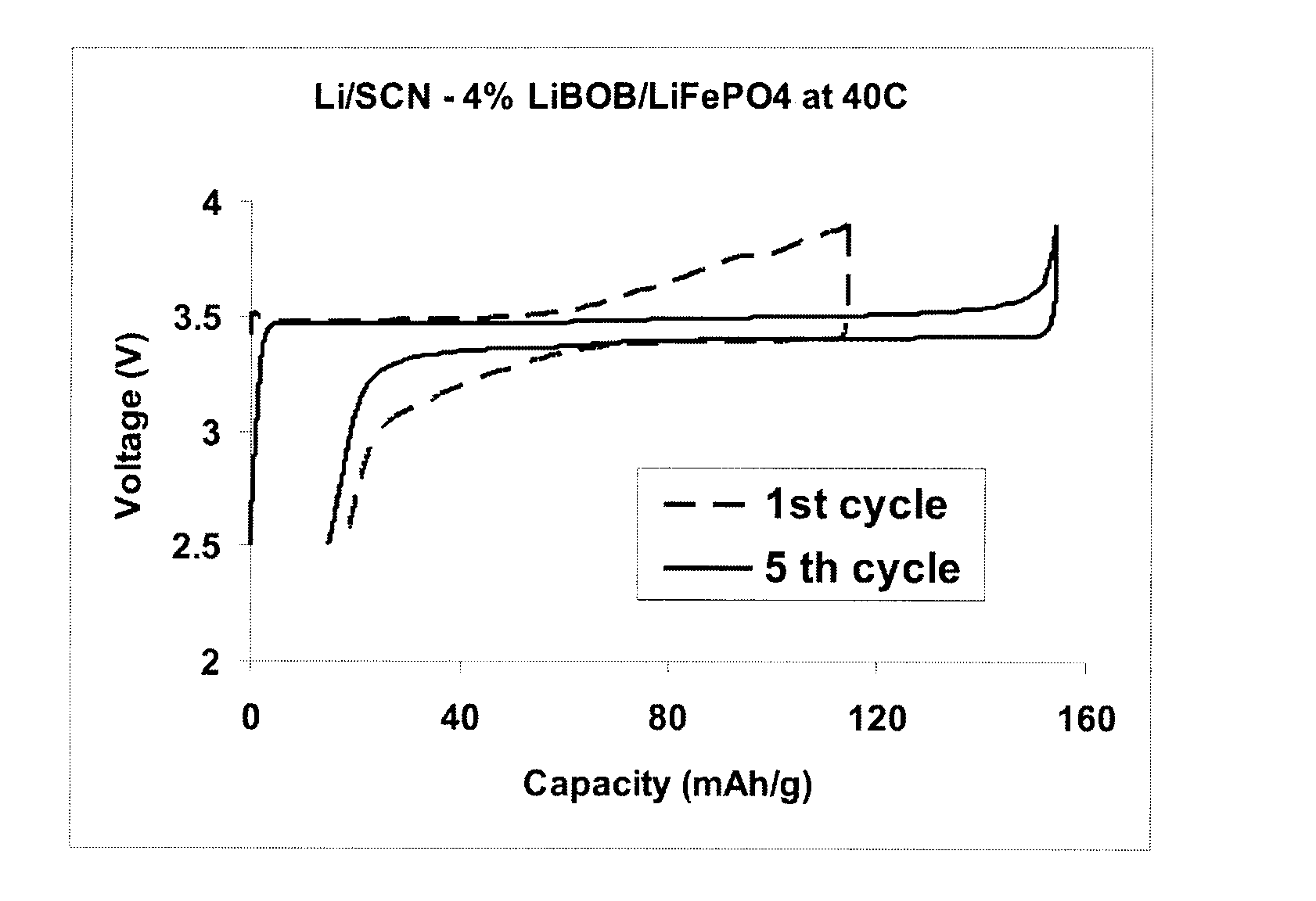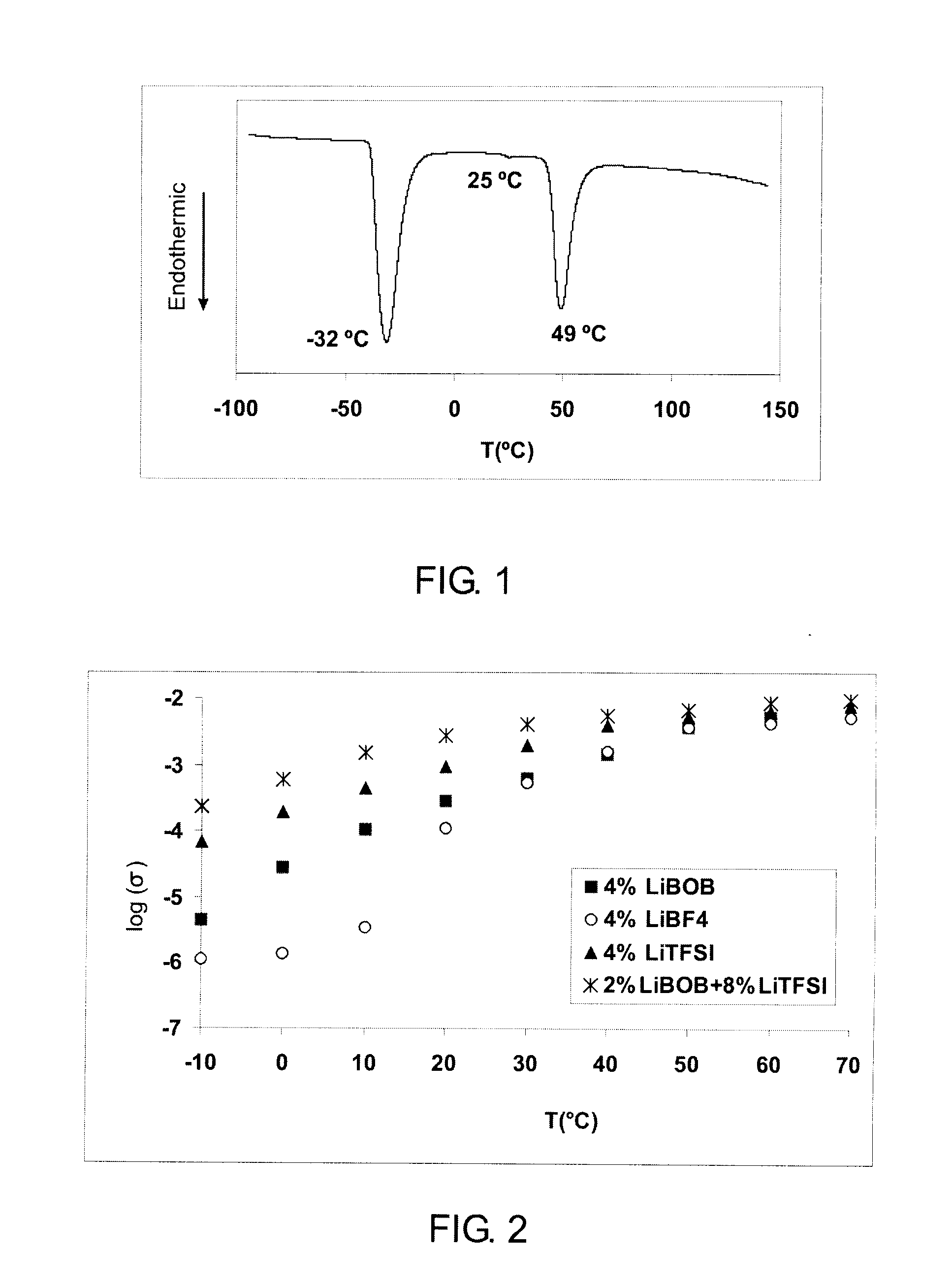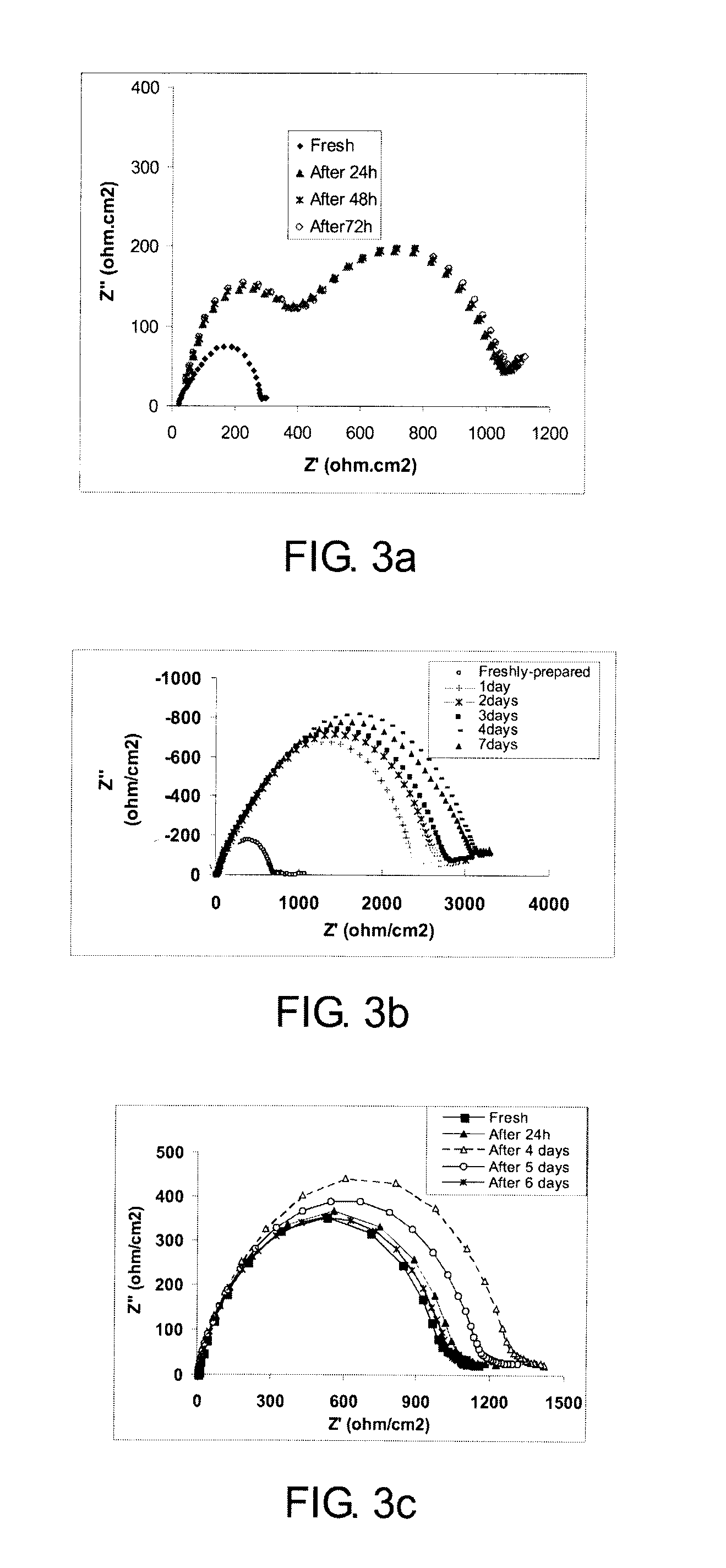Plastic Crystal Electrolyte with a Broad Potential Window
a technology potential windows, applied in the field of plastic crystal electrolytes, can solve the problems of low conductivity at room temperature, low energy densities, packaging, etc., and achieve the effect of limiting the amount of libob that can be used
- Summary
- Abstract
- Description
- Claims
- Application Information
AI Technical Summary
Benefits of technology
Problems solved by technology
Method used
Image
Examples
example 1
Differential Scanning Calorimetry (DSC)
[0044]Succinonitrile exists in the plastic crystal phase between −44° C. and 55° C. [9] and exhibits a body centered crystal structure. In this phase the molecules exist in two isometric conformations; a gauche and a trans isomer [9]. LiBOB is a relatively new lithium battery electrolyte salt [15] characterized by its higher thermal stability and ability to form good solid electrolyte interface (SEI) with lithium. However, LiBOB has lower solubility in organic solvents.
[0045]For differential scanning calorimetry (DSC) studies, a hermetically sealed pan is slowly cooled to −100° C. and then heated to 150° C. at a scan rate of 10° C. / min. FIG. 1 shows the DSC profile for the 4 mol % LiBOB-doped succinonitrile. The first endothermic peak at −32° C. shows the transformation from the rigid solid state to a plastic crystalline state. The second strong endothermic peak at 49° C. indicates the melting point. A weak endothermic peak at 25° C. may be due...
example 2
[0046]Temperature dependency of the conductivity of 4 mol % LiBOB-doped succinonitrile is shown in FIG. 2 in comparison to 4 mol % LiBF4-doped succinonitrile and 4 mol % LiTFSI-doped succinonitrile. Room temperature conductivity for LiBOB-doped succinonitrile is greater than 10−4 S / cm and at 40° C. reaches 1.4×10−3 S / cm, good enough for practical use in lithium cells. The conductivity of LiBOB-doped succinonitrile is between those for LiBF4-doped succinonitrile and LiTFSI-doped succinonitrile. Combination of 2 mol % LiBOB and 8 mol % LiTFSI provides conductivity substantially greater than that of 4% LiTFSI and exceeds 10−3 S / cm at temperatures as low as 10° C.
example 3
Electrochemistry Impedance Spectroscopy (EIS)
[0047]Electrochemistry impedance spectroscopy (EIS) analysis was used to investigate the effect on conductivity of the interface reaction at the lithium-electrolyte interface for the solid electrolyte. It may be represented by a typical Nyquist plot obtained by electrochemical impedance spectroscopy measurements. Time evolution of the impedance response was monitored for a Li / SCN-4% LiBOB / Li cell at open circuit for 72 hours. The low frequency semicircle in the EIS spectra of Li / SCN-4% LiBOB / Li is attributed to the bulk resistance of the electrolyte. The response plotted in FIG. 3a shows that after 24 hours a small expansion occurs in the first semicircle and the formation of a second semicircle is observed. The small expansion of the first semi-circle may be due to a corrosion reaction between the lithium metal and the electrolyte and is minimized by the formation of a solid electrolyte interface (second semi-circle). In measurements tak...
PUM
 Login to View More
Login to View More Abstract
Description
Claims
Application Information
 Login to View More
Login to View More - R&D
- Intellectual Property
- Life Sciences
- Materials
- Tech Scout
- Unparalleled Data Quality
- Higher Quality Content
- 60% Fewer Hallucinations
Browse by: Latest US Patents, China's latest patents, Technical Efficacy Thesaurus, Application Domain, Technology Topic, Popular Technical Reports.
© 2025 PatSnap. All rights reserved.Legal|Privacy policy|Modern Slavery Act Transparency Statement|Sitemap|About US| Contact US: help@patsnap.com



